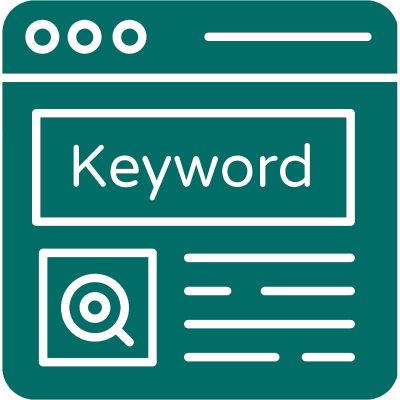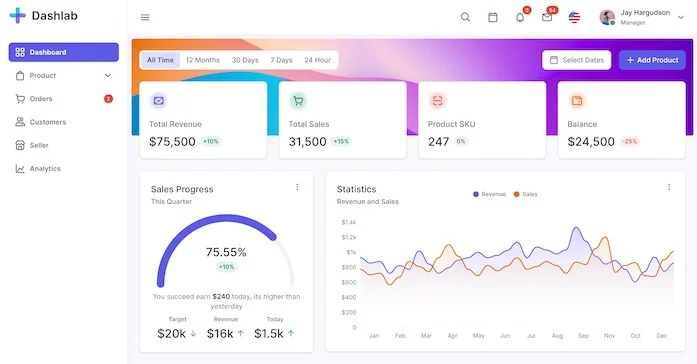SEM vs SEM: The distinction between SEO (search engine optimization), as well as SEM (search engine marketing), is that SEO is focused on bringing visitors from organic search. SEM is focused on gaining traffic from both paid and organic searches. Each SEO, along with PPC, is a method of promoting your company on search engines.
SEO vs. SEM explained
SEO is the act of constantly enhancing a site so that it can rank on organic, unpaid search engine result in web pages (SERPs). Google employs more than 200 ranking signals to determine its algorithm. Contrastingly, SEO can be divided into four subcategories: on-page SEO, Off-page SEO, technical SEO and User Interaction Signals.
On-Page SEO is when you optimize your site’s content around keywords your potential customers are searching for on Google, Bing and other search engines. For example, one of the best practices for on-page SEO is to incorporate your primary key phrase in your meta tag’s title, description, and website URL.
What does SEO stand for?
The SE part of SEO covers everything connected to search engines, including traffic quality and quantity. However, the number of traffic visitors is how many people visit your site regularly.
Nonetheless, The more people who click on your website’s name will visit your website, and we hope the larger your customer base will increase. The SEO portion is all about optimization.
It’s the process that webmasters follow to get more visitors and can be broken down into three categories ( technical, on-page, and off-page ).

SEO is “search engine optimization.” In simple terms, it refers to improving your website’s visibility when people search for products or services associated with your business on Google, Bing, and other search engines.
The more visibility your website pages can achieve in search results, the more likely you will be to be noticed and draw new and existing customers to your company. SEO is a strategy that search engines recommend that improves users’ experience and page rankings by providing content that meets users’ needs.
It’s Completed by using relevant keywords in meta descriptions, titles, and headlines (H1) that include descriptive URLs that contain keywords instead of a string of numbers, schema markups to define the content’s meaning and other SEO best techniques.
In simple terms, Search engine optimization (SEO) is designing your website to be higher on the search engine result page (SERP) to get more visitors. The goal is usually to appear in the first position of Google results for terms most relevant to the target audience.
Thus, SEO is as much about understanding the desires and demands of your customers and the technical aspects of how you can set up your site.
What does SEM stand for?
EM means Search engine marketing it is a type of digital strategy designed to get your business or client to stay at the top of the page of SERP and involves digital marketing ad techniques in search engines like Google.
SEM typically involves paid search, in which companies pay to display their advertisements at the top of the page. If you’ve noticed ads appearing on the right or top of search engines, you’re aware of the meaning of SEM. It’s a kind of marketing that involves placing the URL or advertisement on the SERP to increase traffic and improve the website’s visibility. If your ads appear in these ideal, prominent places, your company will benefit from an edge over its competitors.
In addition, most users only browse the first few results, giving these ads a premium design advantage in terms of visual appeal to grab the attention of potential clients. An “ad” label generally distinguishes paid search ads at the end of the URL. Advertisements can also be images of products that provide additional information on purchasing products related to the search terms entered.
The company then gets paid when a user can click on an advertisement, which is also known as the pay-per-click (PPC) market.
How does SEM benefits a business?
People use the internet to search to find a service or product They type in keywords (called keywords) in search engines such as Microsoft Bing. The searchers discover your advertisement.
If the keywords used in your advertisement match a search, your ad is displayed next to or above the results of a search in Microsoft Bing. Customers are reaching out to you. In SEM, it is possible to set up your advertisement so that visitors can choose to contact you, go to your website or walk right up to your doorstep. SEM is a term used to describe Search Engine Marketing. The distinction between SEO and SEM lies in that Search Engine Optimization is an element of Search engine marketing or Search marketing, as it is commonly known.
Both techniques aim to improve the search engine’s visibility. However, it also involves other strategies to increase people to search engines, like PPC advertising. SEM can be classified into two types which are paid and organic. Both are crucial. As you can imagine, “organic” SEM is a “natural” method of improving the rank of your website in search engines and bringing traffic to your website. The most popular type that is organic SEM is known as search engine optimization (SEO).
The scanning electron microscope (SEM) scans an electron beam on an area to create an image. The beam’s electrons interact with the surface creating different signals that are used to get information on the surface’s topography and composition. Search Engine Marketing (SEM) and Optimization (SEO) are frequently mixed up. However, SEM tactics and SEO strategies are often in sync. However, it can be difficult to determine what’s which.

SEO vs SEM: How does it works?
SEO and SEM are complementary approaches to increasing search engine traffic. SEO focuses on organic outcomes, which means optimizing your website’s content and structure to rank higher for free. It’s a long-term game in which traffic grows gradually. SEM combines SEO and paid advertising (PPC). PPC allows you to build ads that appear at the top of search results, providing rapid visibility but costing you each click. Here are some advantages of SEO and SEM.
1. Produces highly qualified traffic
The process of generating organic traffic is often a lengthy and tiring process, where results can only be seen in the future. Search engine marketing can speed up the process and immediately bring people to your site.
Furthermore, it is a guarantee that they are attracted to what you have to have to offer since they have looked for it.
2. Increases visibility
The top result in Google and other engines associates your company with a certain demand, even if the user can’t click at the first opportunity they view it.
3. Generates conversions
Google Ads and other search engine marketing tools aim to boost business results. To achieve this, you’ll need to develop landing pages optimized that will put your customers in the direction of conversion.
4. You can make the most of your budget.
One of the greatest benefits of using search engines is that it’s an ideal solution for businesses regardless of size since the minimal investment is cost-effective. However, if your brand expands, you can increase the amount of money you invest and the amount of work to keep growing.
Additionally, you only pay when you see the desired results (in the form of clicks), and you are certain that your budget will utilize effectively.
5. You can measure the results.
The search engine marketing tools like Google Ads provide numerous metrics for campaigns. They allow you to know what’s going on at any given time. It makes it simple to change the course, if needed, and achieve more effective outcomes. Search engine marketing, also known as SEM, is a great way to assist companies in achieving their goals quickly and efficiently. To get the most benefit, hiring professionals with years of experience in positioning brands on Google is recommended.
Contact us if you’d like to reap all the advantages that search engines can bring to your company!
Do we need SEO and SEM to help with business strategy?
Through both methods, you can increase the effectiveness of your business. An effective ad and a properly optimized website will boost your brand’s image and increase awareness as a profitable company. However, SEO and SEM represent only the tip of the iceberg. It’s the appearance. If something grabs consumers’ attention, it drives them to know more. Excellent results in a brief duration.
You’ll see more high-quality visitors and traffic to your website with SEO and SEM combined, as opposed to the case using just one. You can populate the SERP with organic and paid results. It means your company’s website and business are displayed frequently, which means you have more chances for customers interested in your services to contact your site.
Data-driven insights that are valuable gained from SEM to complement SEO. Through paid-for results, there’s information on the conversion rate or the keywords that may aid in improving the performance of the website.
Target your website’s organic users with SEM campaigns to remain on top of their minds and increase the chance of a conversion.
Significance of SEO vs SEM
SEO and SEM are critical to online exposure. SEO generates free visitors by ranking high in organic search results, which builds trust and authority over time. SEM provides faster results through paid ads, which is ideal for specialized campaigns or new firms. Both can operate together: SEO provides the groundwork, while SEM increases traffic as needed.
The way SEO strategy performs
The SEO method is a plan designed to improve a website’s rankings and increase the amount of organic traffic. It’s a thorough task list that can assist you in focusing on the factors that will bring you more revenue and traffic via SEO. Analyzing your current statistics is the most effective way to begin making goals, keeping track of the results, and then evaluating which strategies are effective and which aren’t. For reference, You must observe these:
Organic traffic
Organic traffic is any traffic that arrives at your website via an online search engine but isn’t paid for. plays an essential role in SEO and driving results for businesses.
Keyword ranking
The keywords in SEO are the page’s particular position in the search results page for a specific query. When searchers type terms into Google which are related to the subject matter of your website. So its significant to use relevant keywords to get desirable results.
Backlinks
A backlink is just an internet link that connects one site to another. Search engines such as Google use backlinks as a ranking indicator because when one site links to another, it indicates they think the content is notable. Its basically the authority or vote from other website vouching for your website and that’s how google algorithm works. Combining those the data will give you a complete view of your website’s overall performance (historically and currently) with standing.
The SEM strategy that works
Planning and strategy are essential to ensure the outcomes of your SEM campaign, so let’s take some time to look at the essential factors to creating a successful campaign on Google Ads.
SEM campaign
Keywords
When planning an SEM campaign’s details, keyword research is the first step. To convince search engines to display your link as sponsored, you have to buy the keywords people will use to locate your site. When someone types those terms into Google, the site will be displayed as ads are activated. But remember that you should research the target market before you decide what keywords you’d like to use.
Clicks
Clicks redirect users from the ad to the landing site. Also, you can calculate what percentage of users have clicked on your ad.
CPC
A purchase or bid for an ad in Google Ads works through CPC (cost per click). Setting an upper limit for CPC to ensure you stay within your budget is possible.
PPC
Pay per click feature is among the benefits of SEM campaigns that are run on Google Ads. It is not just possible to decide what you’d like to charge per click; you’ll only be charged once someone clicks your advertisement.
Impressions
This is the frequency at which an advertisement is shown. Also, how many searches for one keyword led to your advertisement being shown later? All this information is available through Google.
Relevance
While you may pay for appearing in high positions, Google always considers users. The content must meet the users’ requirements, and they need to consider the ad pertinent and interested in interacting with it. If this is the case, Google will help you gain more visitors and customers.
CTR
It’s also known as click-through rate or Click. It is the percentage of people who have seen your advertisement and acted upon it. If you’ve got a high CTR, you’ve created suitable ads, which Google prefers.
Qualitative Score
It’s (also known as quality level). It is a number that Google provides on a scale ranging from one to 10. It will determine if you’re successful as an advertiser based on the quality of your advertisements. It is vital to keep your ads at or above 7.
Choose the right company to perform SEO or SEM for your business
The decision between SEO and SEM is based on your business objectives and budget. SEO is a strategic investment that promotes organic traffic while increasing brand authority and loyalty. However, its not an overnight success, and major results will take time. SEM provides a faster option with targeted paid ads, which are perfect for increasing traffic quickly or reaching certain audiences.
Choosing the best SEM or SEO company demands significant thinking. Look for a team with an established track record in your business, a commitment to transparency, and effective communication techniques. Do not be hesitant to enquire about their methodology, intended outcomes, and pricing structures. Remember that the cheapest option is not necessarily the best. The ideal partner will emphasise knowing your business objectives and developing a tailored strategy that uses SEO or SEM (or both) to achieve them. By investing in the necessary expertise, you can harness the power of search engines and move your organisation ahead.






